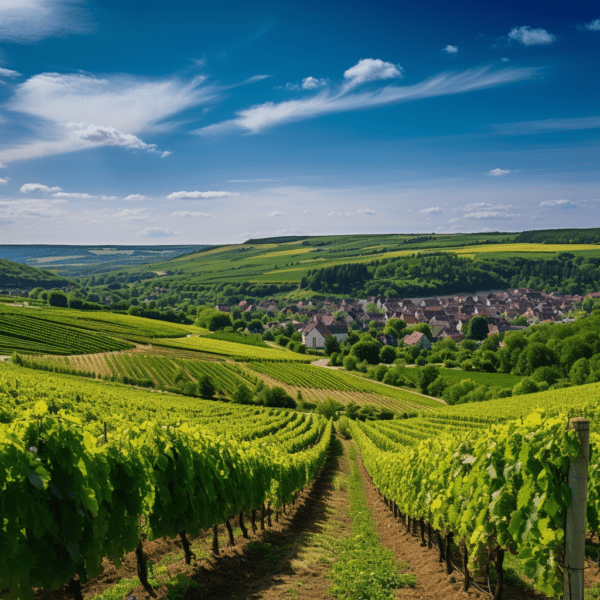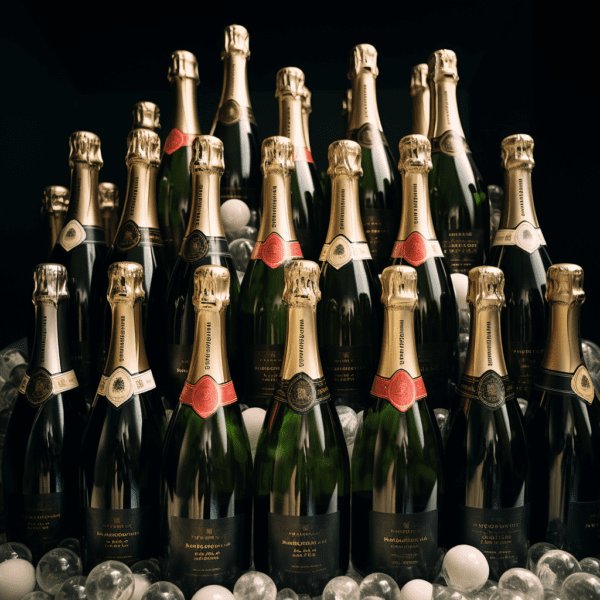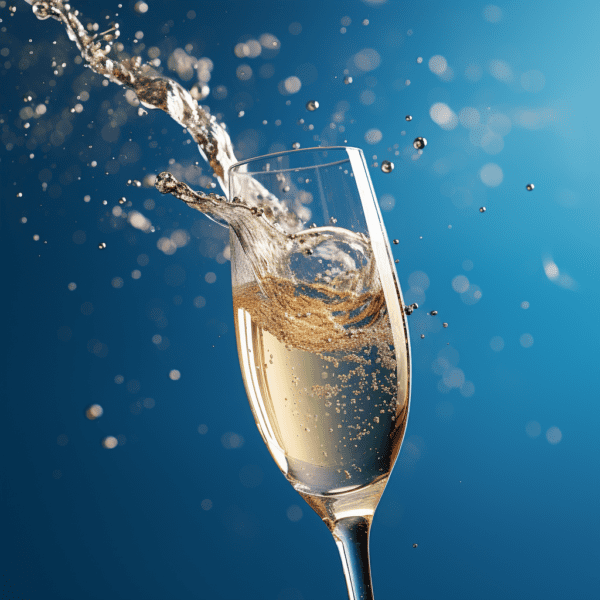
Champagne, a symbol of celebration and luxury, captivates the senses like no other drink.
The journey from vine to glass is a masterpiece of craftsmanship, and it all starts in the enchanting Champagne region of France.
Join us as we unravel the intricacies of champagne-making, step by effervescent step.
The Harvest: A Labor of Love
The first chapter of champagne-making is a labor of love.
Between August and October, when the air is filled with the promise of autumn, skilled hands gently pluck each grape from the vine.
Machines? Not here.
Hand-picking ensures that only the finest, ripest grapes make the cut, quite literally.

The First Fermentation
The harvested grapes undergo a remarkable transformation.
In a controlled environment, the juice extracted from these grapes embarks on its journey to become champagne.
The result? An acidic still wine, completely fermented to remove all natural sugars.
Some, like Champagne Alfred Gratien, dare to ferment in barrels, adding a layer of complexity.
The Assemblage: The Art of Blending
Assemblage, the art of blending, takes center stage.
Still white wines and reserve wines, crafted from the previous harvests, come together in harmony.
Pinot Noir, Pinot Meunier, and Chardonnay, the region’s celebrated grape varieties, are meticulously combined.
This symphony begins in early spring, five months after the harvest, when nature’s palette is at its finest.
The Second Fermentation: Capturing the Bubbles
Now, it’s time to capture the essence of champagne – the bubbles.
A precise mixture of yeast, yeast nutrients, and sugar (liqueur de tirage) is added.
The wine is bottled and sealed with a cap.
Then, the bottles are placed in a cool cellar, where fermentation occurs at a glacial pace.
It’s here that carbon dioxide is trapped within the wine, setting the stage for effervescence.

The Aging: Developing Complexity
After the second fermentation, patience becomes the winemaker’s greatest ally.
As months pass, yeast cells impart their distinct toasty, yeasty character to the wine.
It’s a gradual metamorphosis that culminates in a Champagne that’s anything but ordinary.
The best, the most sought-after, ages for five years or more, a testament to the craft.
The Riddling: Removing Sediment
The journey continues with a precise dance known as riddling.
Bottles are placed upside down, and each day, they’re turned one-eighth of a rotation.
This seemingly simple act forces the dead yeast cells to migrate to the bottleneck.
It’s an art perfected, in part, by Madame Veuve Cliquot, who introduced the bottle rack technique.
The Disgorging: Clearing the Champagne
The moment of clarity arrives with disgorgement, the final step.
The bottle’s neck is frozen in an ice-salt bath, forming a plug of frozen wine, containing yeast cells.
The cap is removed, and the pressure of carbon dioxide within the bottle expels the plug, leaving behind crystal-clear champagne.
A small sacrifice of wine for ultimate clarity.
The Dosage: Adjusting Sweetness
To determine the sweetness level, a precise dosage is introduced.
This mixture of white wine, brandy, and sugar (Liqueur de tirage/Liqueur d’expédition) adjusts the final taste.
Whether it’s Brut Nature, Extra Brut, Brut, Extra Dry, Dry, Semi Dry, or Doux, this secret blend is closely guarded by each Champagne House.
The Corking: Sealing the Treasure
Finally, the bottle is corked, and the cork is securely wired down.
Why the meticulous sealing?
To withstand the tremendous internal pressure of carbon dioxide.
Each bottle is a tiny time bomb, waiting to be unleashed in a burst of bubbles.
The journey from grape to champagne flute is a testament to the harmonious blend of art and science.
With every sip of Champagne, you’re tasting not just a drink but an exquisite work of craftsmanship.
So, next time you raise your glass, savor the centuries of expertise that have gone into crafting this liquid masterpiece.
FAQ:
Q1. What grapes are used in champagne production?
Champagne producers often use a blend of grape varieties, including Pinot Noir, Pinot Meunier, and Chardonnay.
Q2. How long does champagne age?
The best champagne is aged for five years or more, allowing it to develop its signature complex flavors.
Q3. What is the purpose of disgorging?
Disgorging is the final step that removes sediment and ensures clarity in the champagne.
Q4. How is the sweetness level of champagne determined?
The sweetness level of champagne is adjusted using a secret blend known as the dosage, which varies among Champagne Houses.
Q5. Why is champagne bottled under high pressure?
Champagne is bottled under high pressure to trap carbon dioxide and create its signature effervescence.
Enjoy your exploration of the world of champagne, where every bottle tells a tale of dedication and finesse.








